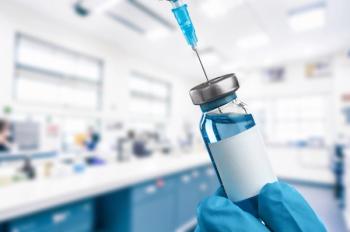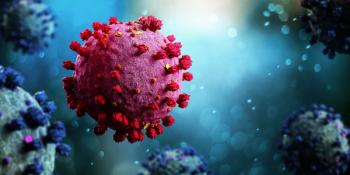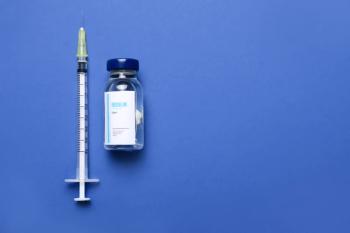
Preparing for biosimilars
A short history of biologics and biosimilars, with some pointers on what comes next
The first wave of biologic agents was greeted with celebration and consternation when they entered the market in the 1980s and 1990s. Celebration, because agents such as human growth hormone, alpha interferon, tissue plasminogen activator, and erythropoietin offered new hope and new treatments for intractable diseases. Consternation, because no one, including pharmacy professionals, had any experience dealing with this new class of agents.
Biologics aren’t drugs, yet they are managed like drugs at the pharmacy, hospital, and health-system levels. They devoured frighteningly large chunks of limited pharmacy budgets. Both their therapeutic and side-effect profiles were riddled with question marks, in part because no one, including manufacturers, had the technology to fully characterize their structure, composition, or method of action.
Fast-forward to 2013. The Patient Protection and Affordable Care Act (ACA) has created a pathway for the approval of follow-on biologics. The prospect of therapeutic equivalents to some of the most effective and most expensive therapeutics now available is sending similar waves of celebration and concern through the current generation of pharmacy managers, Pharmacy and Therapeutics Committees, and health-system budget managers. There is celebration over the prospect of competition, therapeutic alternatives, and lower prices. The consternation arises over the prospect of yet another new category of therapeutic agents with unclear characterization, uncertain therapeutic interchangeability, and unknown fiscal impact.
Or maybe not. Pharmacy, P&T committees, and budget managers have decades of experience dealing with biologic agents, both on and off patent. They just don’t realize it.
Lessons of the past
Take insulin, for example. It was the first biologic agent to be approved by the Food and Drug Administration in the distant era of 1982. Most of the commonly used insulins today are biologics, said James Stevenson, PharmD, director of pharmacy services at the University of Michigan Health System as well as dean and professor in clinical sciences at the University of Michigan College of Pharmacy in Ann Arbor, Mich.
Or consider erythropoietin (EPO), first approved in 1989. Multiple versions of Epo are in clinical use and deciding which version to use is a non-issue for most health systems.
“The same principles that guide substitutions and switches between Novolog [insulin aspart (rDNA origin), Novo Nordisk] and Humalog [insulin lispro (rDNA origin), Lilly] or between Epogen [epoetin alfa, Amgen] and Aranesp [darbepoetin alfa, Amgen] apply to other biologics as well,” Stevenson told Drug Topics.
“Novolog and Humalog are not identical, but therapeutically, they are very similar. Most health systems don’t carry both, just one of them. We have learned how to interchange them. Those lessons don’t change just because we are looking at $23 billion worth of biologics coming off patent between now and 2019.”
What does change is what happens to biologics when they go off patent and another manufacturer attempts to enter the market. When small-molecule drugs lose patent protection, the market is quickly flooded with generic equivalents.
Generics sometimes enter
Biosimilar, not bioequivalent
The future isn’t so simple for biologics. For starters, there is no such thing as a generic biologic product. There never will be, Stevenson said, because of the nature of biologics.
Small-molecule pharmaceuticals are synthetic compounds that can be created almost anywhere by anyone who has the recipe, the raw materials, the equipment, and the know-how to put them all together in a formulation that meets FDA requirements. Atorvastatin is the same molecule whether it carries the Lipitor (Pfizer) brand name or is made by Apotex, Dr. Reddys, Kudco Ireland, Mylan, Ranbaxy, Sandoz, or another generic manufacturer.
“You can’t create an exact copy of biologics,” Stevenson said. “These large molecules are grown through biologic processes, not created by synthetic chemistry. The best you can hope for is to create another large molecule that is biologically similar and therapeutically equivalent to the original agent. There is no such thing as bioequivalence for large molecules. But there can be biosimilarity.”
Part of the problem is legal and historical. Drugs are regulated by the Food, Drug, and Cosmetic Act (FDCA, passed in 1938). Most biologics are regulated under the Public Health Service Act (PHSA, 1944), although a small number of biologics, including insulin, some hormones, and a few enzymes, falls under FDCA because they were already on the market when PHSA was passed.
Regulatory authority matters, said Stevenson, because generic drugs have their roots in the Hatch-Waxman Act, formally known as the Drug Price Competition and Patent Term Restoration Act, passed in 1984. The bill created two pathways for FDA approvals of generic equivalents of reference-drug products approved under the FDCA. Generic manufacturers could seek approval with an Abbreviated New Drug Application under section 505(j) of Hatch-Waxman for products that contained the same active ingredient as the reference product. Most generics are approved with an ANDA.
The second pathway, section 505(b)(2), allows approval for generics that are not identical to the reference product, but are similar in action. This pathway has been used to approve generic versions of human insulin and Omnitrope (somatropin [rDNA origin], Sandoz), some of the few generic biologics on the market in the United States.
Outside the handful of biologics that fall under FDCA, there has not been a regulatory approval process for a follow-on product. The Generic Pharmaceutical Association pushed FDA to approve biologics under the existing framework in 2002, but the Biotechnology Industry Organization filed a Citizen’s Petition in 2003 that effectively blocked approvals of follow-on biologic agents.
Rx benefit implications
Pressure for approval of follow-on biologics continued. In 2006, the European Commission approved Omnitrope, the world’s first successor to an innovator biologic. The European Medicines Agency, the European Union equivalent of the FDA, dubbed Omnitrope a biosimilar, a term that been adopted worldwide.
In the United States, attention focused on the cost of biologics. A year of Avastin (bevacizumab, Genentech) for breast cancer costs about $92,000, Stevenson noted. A year of Cerezyme (imiglucerase, Genzyme) costs about $200,000. In 2006, Medicare alone spent $2.8 billion for Epogen, more than the entire $1.863 billion FDA budget for that fiscal year. In 2007, Express Scripts estimated cost savings of more than $71 billion over 10 years from just the first four classes of biologics expected to face biosimilar competition: interferons, erythropoietins, growth hormones, and insulin.
“There will be significant pressure from all sides to utilize biosimilars to control healthcare costs,” Stevenson said. “There will be significant financial pressure to consolidate market share around a product. Payers will be exerting pressure, clinicians will be exerting pressure, patients will be exerting pressure, manufacturers will be exerting pressure. Pharmacy is in the middle, trying to navigate all these conflicting pressures.”
Balancing the conflicting pressures to use one product rather than another is as much a technical problem as it is a clinical conundrum, he continued. Current information technology systems are designed to work with generic products that are, at least in theory, freely interchangeable. There is no need to distinguish one generic from another for clinical purposes. Few health systems track which patient received which product and which formulation from which manufacturer; they simply track the product and formulation.
That level of product identification may be appropriate for generics, Stevenson said, but not for biosimilars. The key concept is “similar.”
Practical implications
Biosimilar does not mean not bio-identical. Biosimilars can be expected to have slightly different pharmacokinetic and pharmcodynamic characteristics compared to the reference product and compared to each other. Side-effect profiles may be different. Because each biosimilar is a unique molecule, each may have unique therapeutic and immunogenic effects.
“We need to track precisely which product each patient was exposed to,” Stevenson said. “This level of tracking is crucial for pharmacovigilance and post-marketing studies. We need to identify precisely which agent a patient received.”
The FDA has standard naming conventions for most therapeutics, he continued, but not for biosimilars. Until and unless the agency develops and then enforces naming conventions, health systems may have to devise their own tracking systems to identify different biosimilars.
The one thing that is unlikely to change is how health plans evaluate and reimburse biosimilars. Health plans recognize that each biosimilar is a unique therapeutic entity. Expect protocols to evaluate biosimilars that look very much like protocols that are currently used to evaluate new brand-name products and formulary reviews.
Once plans decide where to place a new biosimilar on formulary, expect to see all the usual patient incentives employed to drive biosimilar use. Tiered coverage, differential copays, and other familiar tools will all come into play.
The challenge, Stevenson said, is to determine the level of studies and clinical data needed to establish therapeutic equivalence between biosimilars and reference products. If two products, either a biosimilar and its reference product or two biosimilars, are considered therapeutically equivalent, the next question is how - or whether - to cover one, all, or none.
Transitions of care are a similar challenge. How do pharmacists deal with patients who enter a hospital or health system on biosimilar A, when the system formulary mandates biosimilar B? The same question could emerge at discharge, when the patient may be on biosimilar B and the outpatient formulary mandates another biosimilar or the reference agent.
“The therapeutic equivalence principles we all know and use every day need to be applied to biosimilars,” he said. “We need to think about how, or whether, we will do a therapeutic interchange program for each biosimilar.”
Pharmacy implications
Biosimilars are not likely to arrive tomorrow, or even next year, Stevenson said. That gives pharmacy time to consider options and create effective programs to appropriately manage biosimilars.
But there is not much time. As FDA is still finalizing the details of biosimilar approval processes, drugmakers are preparing their own biosimilar submission programs. The first biosimilars could become available as early as 2015, but there are at least nine biologics with sales of $1
“What pharmacists can do now is educate themselves about biologics and biosimilars, and how they are different from the small molecules we know from years of experience,” Stevenson said. “Biologics are a very fast-growing expense category. That is why payers are so eager to get biosimilars into the mix.”
But just as large-molecule biologics are more complex and more expensive than small-molecule drugs, biosimilars will be more expensive than generics. Generic savings can reach 90% of reference-product prices. The savings from biosimilars are more likely to fall in the range of 30% of the cost of reference brands.
“That translates into a very substantial sum, but it is not the kind of savings we are accustomed to with generics,” Stevenson cautioned. “Biosimilars will reduce the rate of growth in spending. Drug spending will continue to grow, but at a somewhat lower rate. We can expect to see utilization tolls such as prior authorization and significant copays or coinsurance to encourage the use of biosimilars.”
He concluded, “It is time to work with P&T committees on strategies to deal with biosimilars and ways to handle hand-offs when patients enter and leave the system. These are things that need to be discussed in detail over the next year or so. But these are not discussions that are foreign to us. We have done all of this before with new biologics and new therapeutic agents.”
Contributing Editor Fred Gebhart works all over the world as a freelance writer and editor, but his home base is in Oregon.
Newsletter
Pharmacy practice is always changing. Stay ahead of the curve with the Drug Topics newsletter and get the latest drug information, industry trends, and patient care tips.

















































































































